.
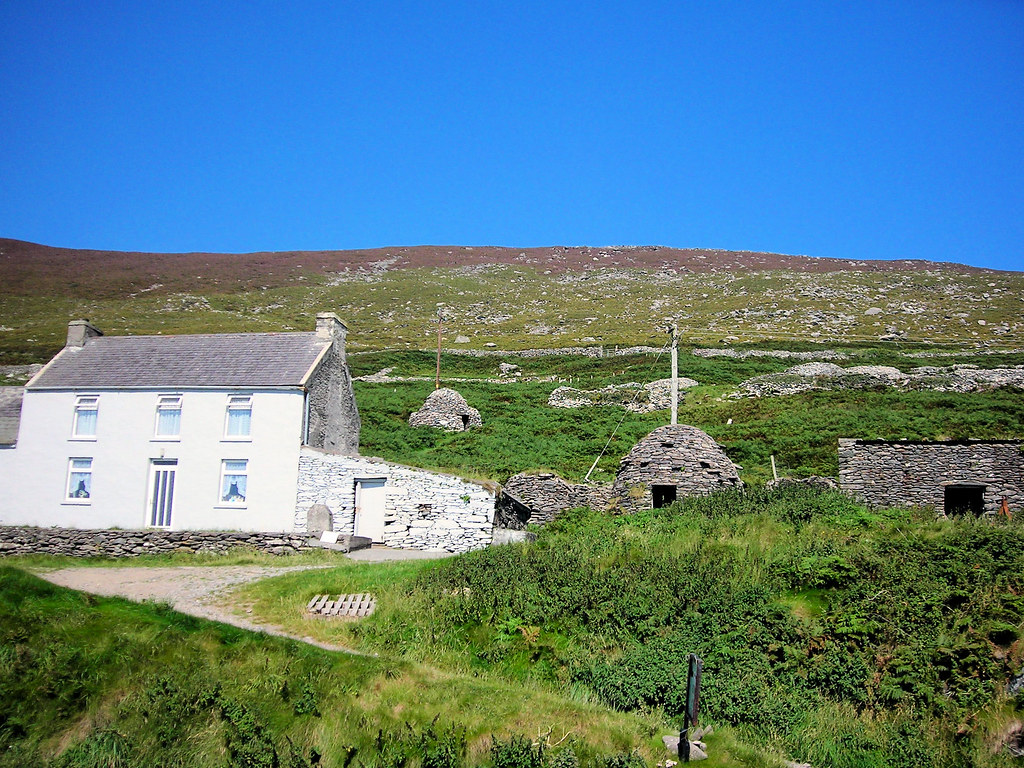
Beehive huts, Dingle Peninsula, Kerry. The hillside along the Slea Head Drive in the townland of Fahan is littered with Clocháns, or Beehive Huts. At one stage there were over 400 of these drystone, corbelled huts surviving, prompting one antiquarian in the 19th century to refer to the area as the "City of Fahan". These structures occur as single units or can also be found within stone fort complexes. They are generally believed to have been habitation sites, although the tradition of such buildings continued up to the early 20th century for storage purposes. Dating the huts is difficult because the skill of corbelling has been used in Newgrange (3100 BC) and as recently as the 1950s. The huts along the Slea Head Drive may well date to the 12th century when the incoming Normans forced the Irish off the good land and out to the periphery of the peninsula: photo by Jim Linwood, 7 September 2007
On Sundays I watch the hermits coming out of their holes
Into the light. Their cliff is as full as a hive.
They crowd together on warm shoulders of rock
Where the sun has been shining, their joints crackle.
They begin to talk after a while.
I listen to their accents, they are not all
From this island, not all old,
Not even, I think, all masculine.
They are so wise, they do not pretend to see me.
They drink from the scattered pools of melted snow:
I walk right by them and drink when they have done.
I can see the marks of chains around their feet.
I call this my work, these decades and stations --
Because, without these, I would be a stranger here.
Eiléan Ní Chuilleanáin: Studying the Language, from The Brazen Serpent, 1994
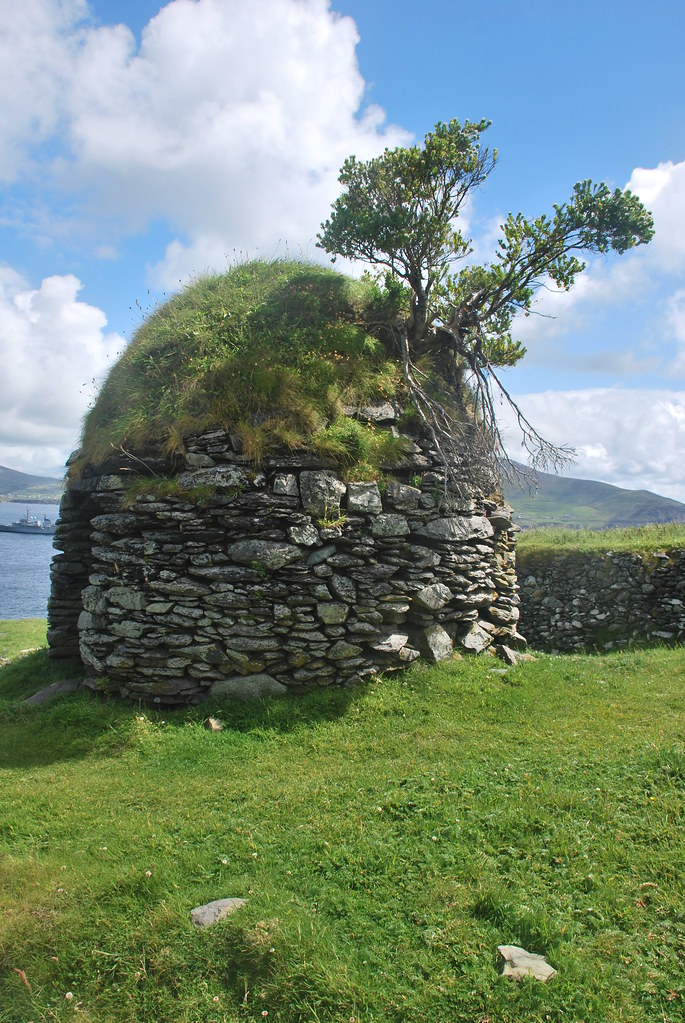
Beehive hut on Great Blasket Island, Kerry: photo by Guidje, 23 June 2011

Beehive hut, Dingle Peninsula, Kerry. The remains of a beehive hut on the bank of Mount Eagle Lake near Ventry. Is was fairly wet the day i was there and the mist can be seen coming in at the top corner: photo by Matt Smyth (granardblue), 7 August 2007
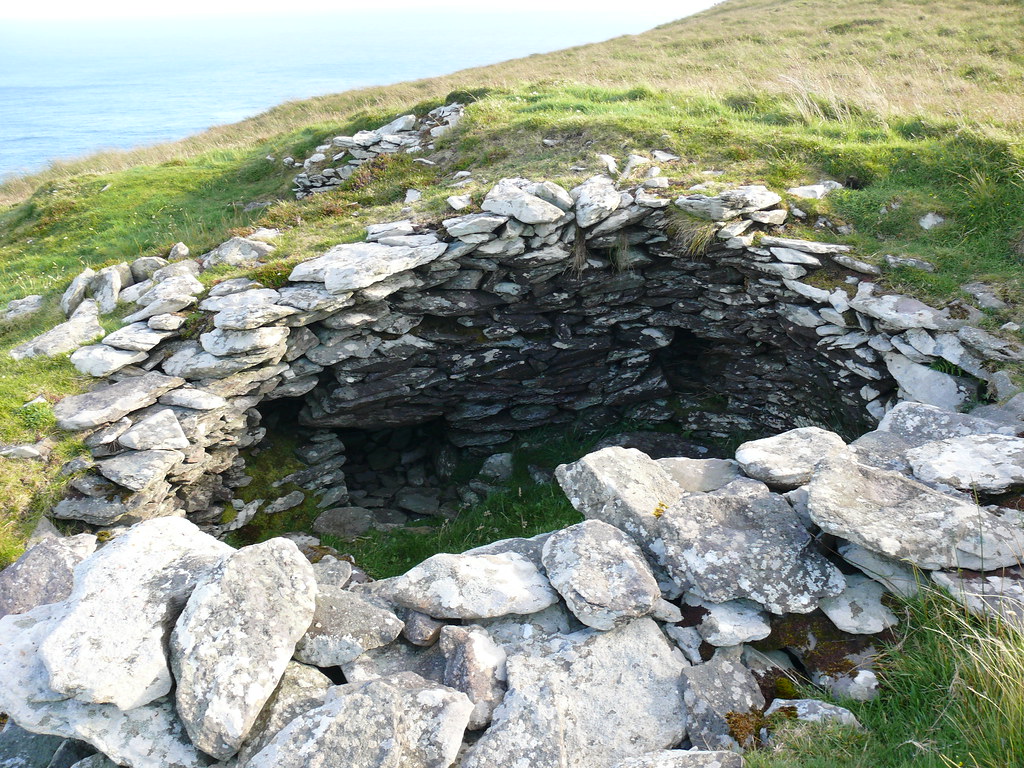
Beehive huts -- An clochán có-nascaithe. The remains of two perhaps conjoined huts, perhaps 1000 years old, south west side of the Great Blasket Island, Kerry: photo by Gan_Ainm1, 4 August 2011
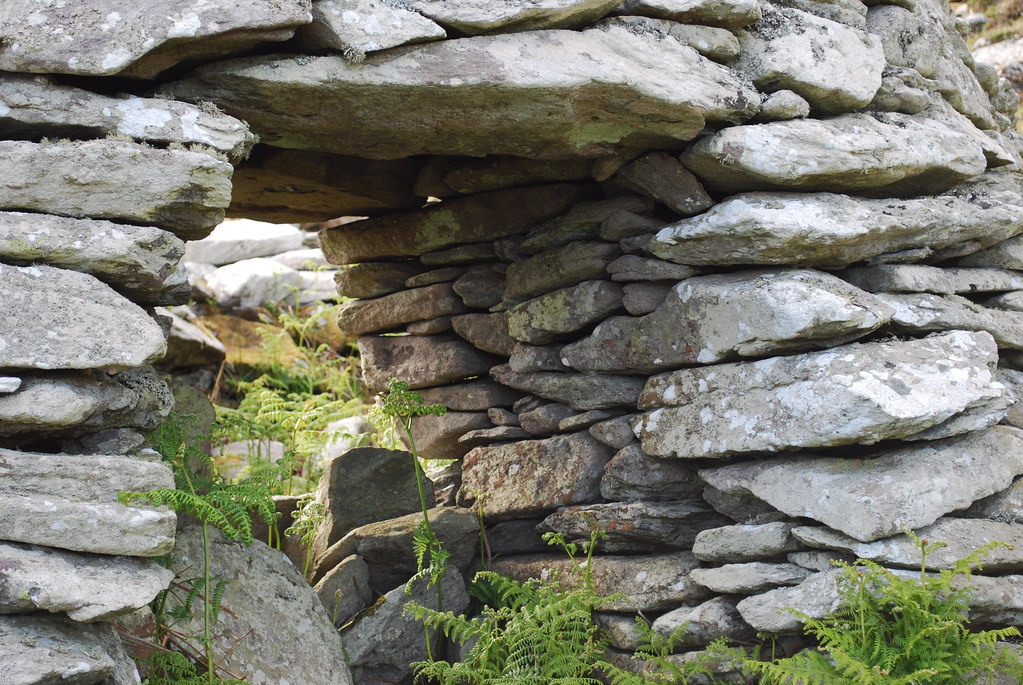
Beehive hut, Eagle Mountain, Dingle Peninsula, Kerry: photo by Aleksandra Piechorowska (olenka :)), 3 May 2009

Doorway. Beehive huts, Dingle Peninsula, Kerry: photo by sandyraidy, 8 August 2012
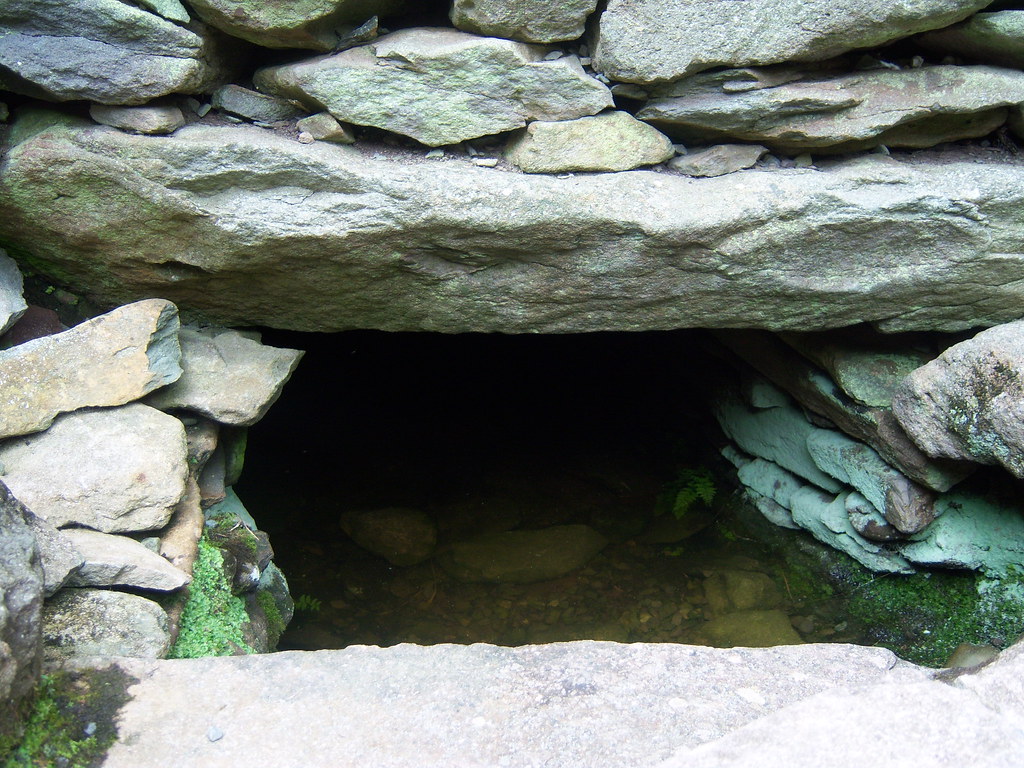
Beehive hut, Dingle Peninsula, Kerry: photo by PolosNPearls, 31 July 2008
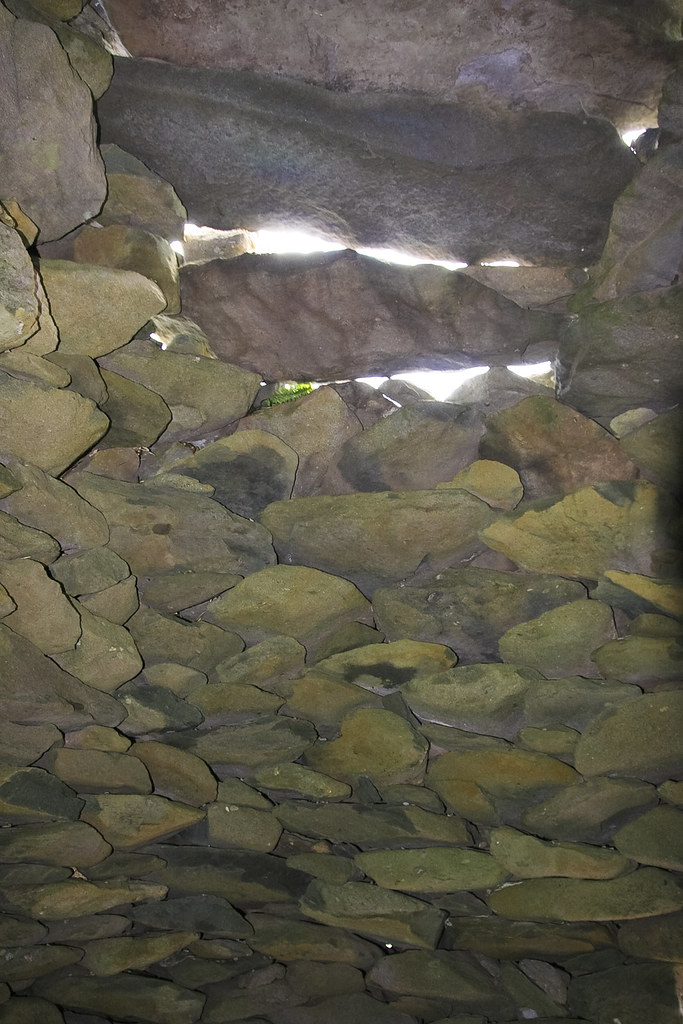
Corbelled roof of a beehive hut, Dingle Peninsula, Kerry: photo by Craig K. Gowans (txcraig75), 27 June 2007
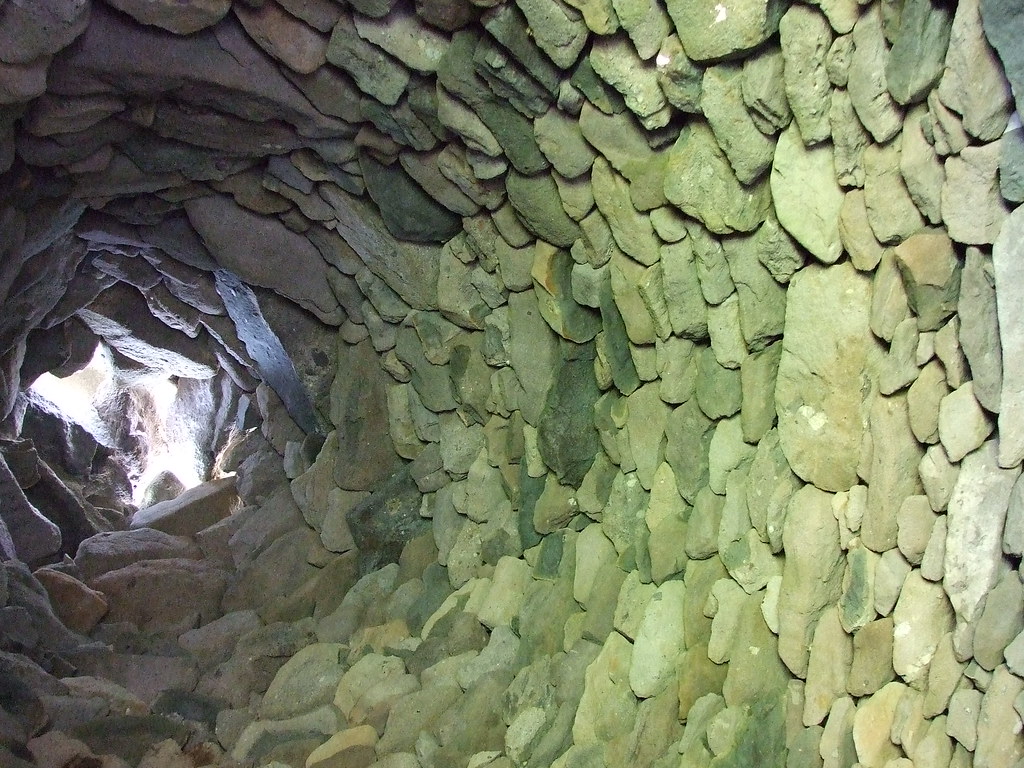
Corbelled roof of an intact beehive hut, Ventry, Kerry. Dry-stone construction. No mortar holds this together: photo by jen-the-librarian, 11 May 2008
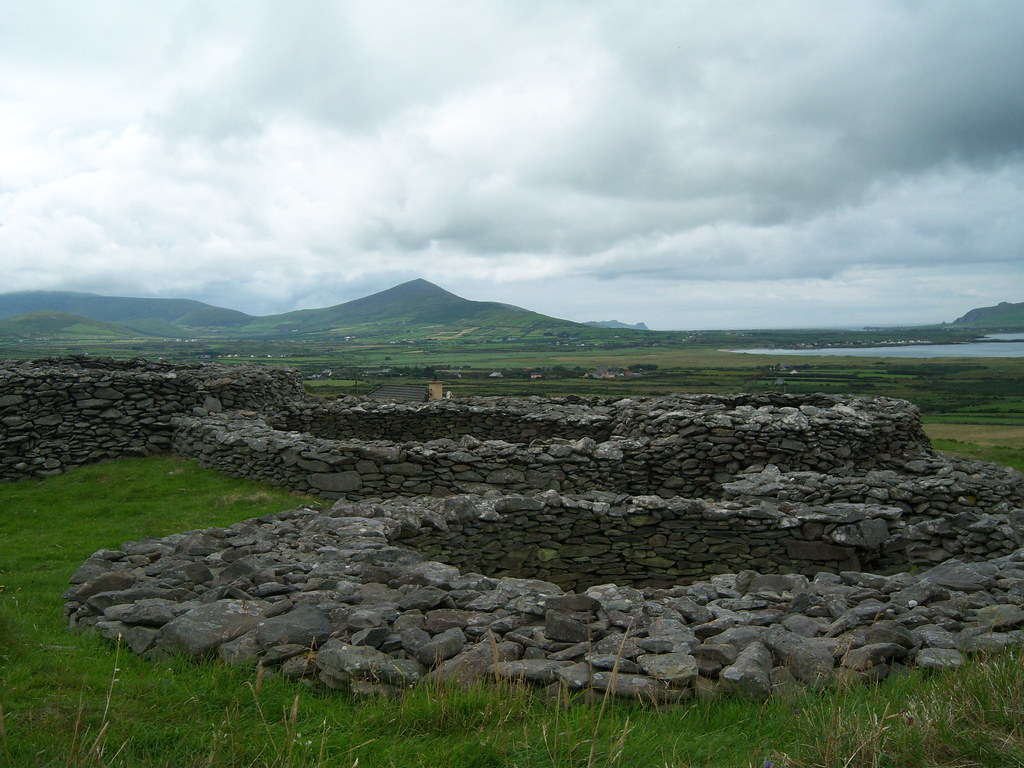
Beehive huts, Dingle Peninsula, Kerry: photo by PolosNPearls, 31 July 2008
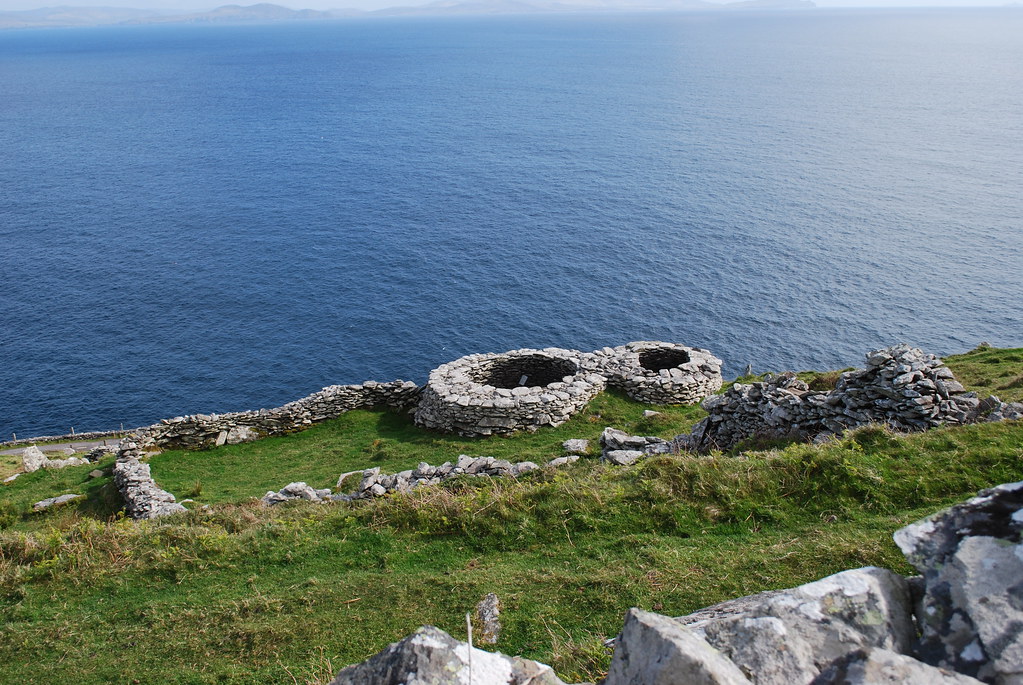
Beehive huts, Eagle Mountain, Dingle Peninsula, Kerry: photo by Aleksandra Piechorowska (olenka :)), 3 May 2009
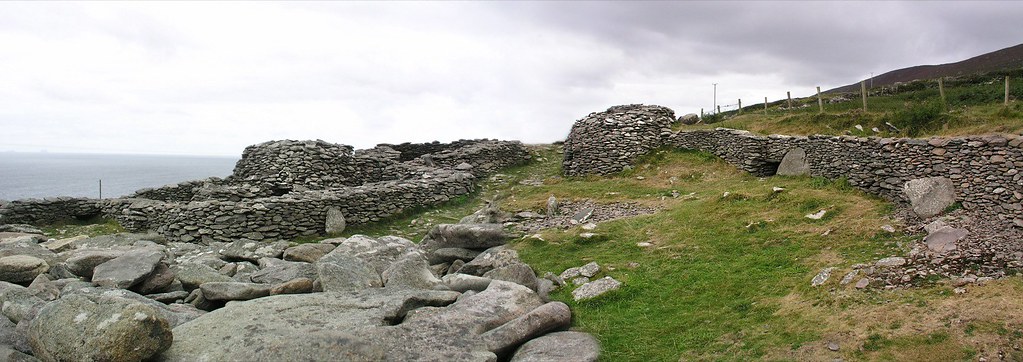
Beehive huts, Dingle Peninsula, Kerry: photo by Ken Osborn (misterken), 28 November 2003

Beehive huts, Dingle Peninsula, Kerry,. Also known as clochans. A clochan is dry-stone hut with a corbelled roof, dating from the early Middle Ages or earlier. Most archaeologists think these structures were built on the southwestern coast of Ireland since the Bronze Age: photo by Neal1960, October 2003

Beehive hut, Dingle Peinsula, Kerry: photo by Marion J. Ross, October 2005
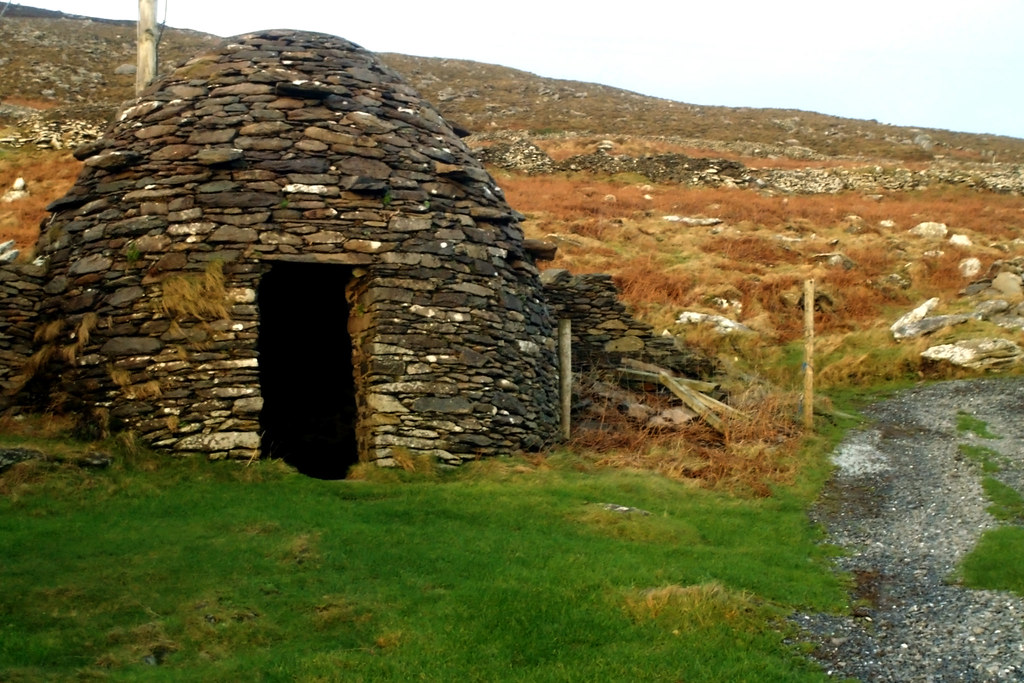
Beehive huts, Dingle Peninsula, Kerry: photo by Marion J. Ross, 30 December 2006
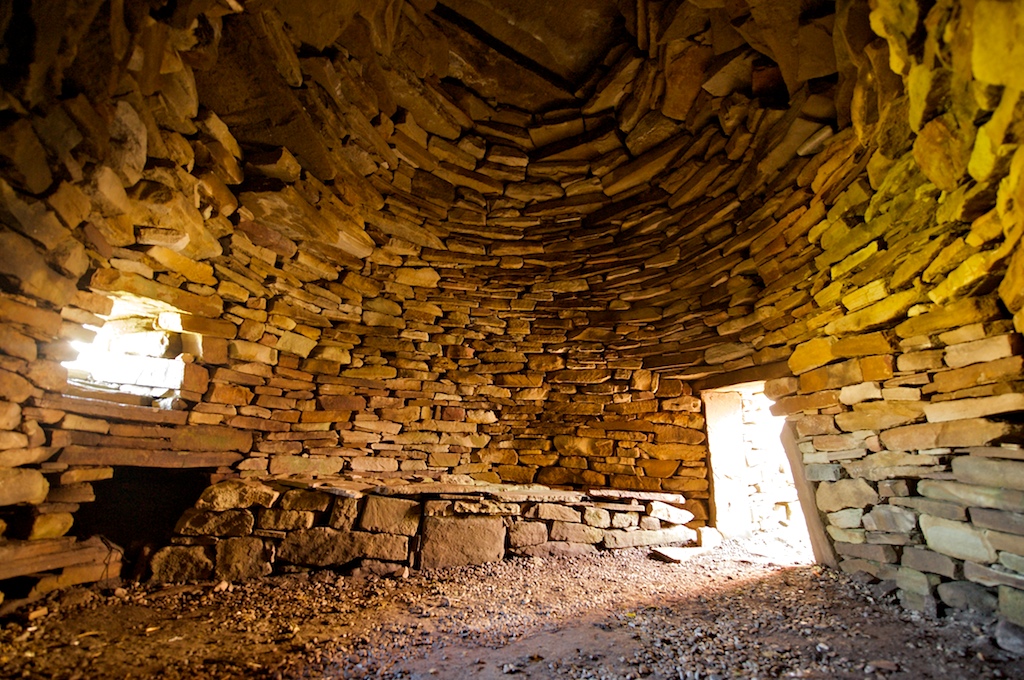
Celtic monastery, inside a beehive hut. A beehive hut at the 6th century Irish monastery of Inishmurry: photo by Jim Richardson (JC Richardson), 15 June 2006
In the final poem in The Brazen Serpent, 'Studying the Language', Ni Chuilleanain brings the issues of architecture and language together in the image of an early but enduring architectural marvel: the beehive huts which dot the southwest coast of Ireland. Constructed in the early Christian era of corbelled stone, and occupied at times by individual hermits as well as members of monastic communities, these huts have been inhabited into modern times. 'Studying the Language' describes the experience of seeing them... The speaker describes walking among the hermits, drinking where they have drunk and noticing the chains on their feet. The final lines are those of this poem's speaker, borrowed from the preface to Thomas More's Utopia, but they can be read also as Ni Chuilleanain's own: 'I call this my work, these decades and stations--/ Because, without these, I would be a stranger here'. As the poem implies, studying the languages of people, and the buildings in which they live, has been a major concern in all of Ni Chuilleanain's work. The beehive huts, and the mysterious occupants within, who endure long periods of silence, are a way into the past but also a part of the present and a symbol of a life we can only speculate about. The hermits, like the nuns Ni Chuilleanain writes about, live both isolated and communal lives, sheltered by enclosing huts shaped like the bee's hive...
'Studying the Language' takes on another meaning when we realize that beehive huts are found in the gaeltacht, in the same areas in Ireland as the ogham stones, repositories of a symbolic and early Gaelic language which is itself a mystery. A twenty letter alphabet which has created its own 'study', it is a storehouse of early Ireland, a language employed by scholars and druids but generally unknown to others. For a poet, the modern version of the druid, this language may be the ultimate mystery, embodying the secrets of Ireland's past. Again with Ni Chuilleanain, we come to an edge, a border, beyond which we cannot go -- the language is there, to be studied but never fully understood. As the gaeltacht embodies Ireland's two languages, we remember the final lines of 'A Glass House' which asks about the birds: 'How far do I need to travel / To understand their talk?' In the context of the beehive huts, found in the Dingle gaeltacht, the talk can be the Irish language, preserved within a small population. Whether we are talking of language, of families, of hermits, or of ruins, mysteries and secrets are at the centre of Ni Chuilleanain's work: 'these decades and stations--/ ... without these, I would be a stranger here' .
The architectural metaphor in the poetry of Eilean Ni Chuilleanain: Patricia Boyle Haberstroh, in Irish University Review: A Journal of Irish Studies, 22 March 2007
![]()
Puffin looking seaward from cliffside nest, Dingle, Kerry: photo by Matthew Cattell, 13 June 2006
'Studying the Language' takes on another meaning when we realize that beehive huts are found in the gaeltacht, in the same areas in Ireland as the ogham stones, repositories of a symbolic and early Gaelic language which is itself a mystery. A twenty letter alphabet which has created its own 'study', it is a storehouse of early Ireland, a language employed by scholars and druids but generally unknown to others. For a poet, the modern version of the druid, this language may be the ultimate mystery, embodying the secrets of Ireland's past. Again with Ni Chuilleanain, we come to an edge, a border, beyond which we cannot go -- the language is there, to be studied but never fully understood. As the gaeltacht embodies Ireland's two languages, we remember the final lines of 'A Glass House' which asks about the birds: 'How far do I need to travel / To understand their talk?' In the context of the beehive huts, found in the Dingle gaeltacht, the talk can be the Irish language, preserved within a small population. Whether we are talking of language, of families, of hermits, or of ruins, mysteries and secrets are at the centre of Ni Chuilleanain's work: 'these decades and stations--/ ... without these, I would be a stranger here' .
The architectural metaphor in the poetry of Eilean Ni Chuilleanain: Patricia Boyle Haberstroh, in Irish University Review: A Journal of Irish Studies, 22 March 2007

Puffin looking seaward from cliffside nest, Dingle, Kerry: photo by Matthew Cattell, 13 June 2006